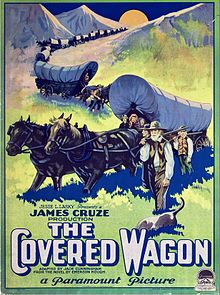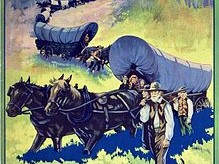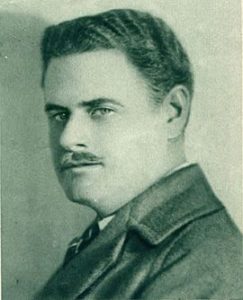The Covered Wagon ***** (1923, Ernest Torrence, Tully Marshall, J Warren Kerrigan, Lois Wilson, Alan Hale Sr) – Classic Movie Review 6834
Producer-director James Cruze’s trail-blazing 1923 silent Western is faded but important historically and it still impresses. Cruze’s major movie is one of the first American epics and notable for elevating the Western from popular potboiler to important epic.
The film stars J Warren Kerrigan as Will Banion (hero), Lois Wilson as Molly Wingate (heroine), Alan Hale Sr as Sam Woodhull (villain), Ernest Torrence as William Jackson, Tully Marshall as Jim Bridger, Ethel Wales as Mrs Wingate, Charles Ogle as Jesse Wingate and Guy Oliver as Kit Carson.
Based on a novel by Emerson Hough, the story tells of a group of pioneers travelling through the old West from Kansas on an 1840s wagon train bound for Oregon. They hear that gold has been found in the Californian hills, so wagon train decides to split in two, one half going to California, the other on to Oregon. The way is hard, what with the desert heat, mountain snow, hunger and an Indian attack.
Director Cruze, shooting on location mainly in Utah for a then astonishing $782,000, gives an epic sweep to the unfolding drama that portrays the best and worst in human behaviour. The Covered Wagon is chock-a-block with notable, endlessly much-copied scenes, including the exciting buffalo hunt, the Indian attack and 400 wagons fording a river. It easily recouped its costs as the most popular movie of 1923 in north America, with a $3.5 million worldwide box office take.
Also in the cast are Johnny Fox [John Fox Jr] as Jed Wingate, Frank Albertson in a minor role (uncredited). John Bose as Pioneer (uncredited), Barbara Brower as Pioneer Child (uncredited), Chief Thunderbird as Indian (uncredited) and Constance Wilson in a minor role (uncredited).
The Covered Wagon is directed by James Cruze, runs 98 minutes, is made by Famous Players-Lasky Corporation, released by Paramount Pictures, written by Jack Cunningham (adaptation), shot in black and white by Karl Brown, produced by James Cruze, scored by Josiah Zuro and Hugo Riesenfeld, and edited by Dorothy Arzner.
It was shot in Palm Springs, California, and on Nevada and Utah locations. The buffalo hunt and stampede were filmed on Antelope Island, Great Salt Lake, Utah.
Tim McCoy was technical adviser and recruited the Indians who appear in the movie.
The covered wagons were cherished heirlooms of the families who owned them, offered $2 a day and feed for their stock to bring the wagons for the movie. Most of the extras are these families and drove and lived in them during the production.
A musical soundtrack was recorded in the short-lived DeForest Phonofilm sound-on-film process, shown only at the premiere at the Rivoli Theater in New York City.
© Derek Winnert 2018 Classic Movie Review 6834
Check out more reviews on http://derekwinnert.com




